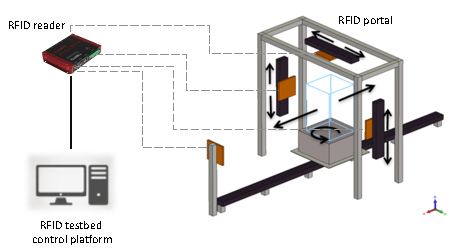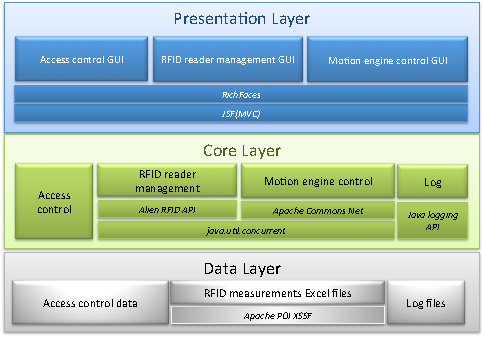Section: New Results
Pervasive support for RFIDs
Participants : Nebil Ben Mabrouk, Paul Couderc [contact] .
In situations where we have to read large collection of objects of various types, the performance is difficult to predict but may still be adequate for a given application. For example, some application can tolerate missing some tags, provided that miss read probability could be characterized. In some cases, read reliability could be improved using mechanical approaches, such as introducing movements in objects or antenna to introduce radio diversity during read. Finally, distributed data structure can be used over a set of tags to be used to mitigate the impact of mis-read (by using data redundancy) and to help the reading protocol by integrating hints about the tag set collection being read.
Our objective here is to study extensively by experimentation the behaviour of existing RFID solutions in the context of uncontrolled environment (meaning, random placement of tags on objects mixing various materials) in order to characterize their real-world performance regarding the parameters of such as tags numbers, density, frequencies, reader antenna design, dynamicity of objects (movements), etc. From these experimentations, we would like to identify the conditions that are favorable to acceptable performance, and the way where there are hopes of improvement with specific design for these difficult environments. These results should also allow improving the performance: high level integrity checks can guide low level operations by determining whether inventories are complete or not. This cross layer strategy can enable faster are more efficient inventory protocols.
An important milestone was completed in 2014, with the implementation of an experiment test bed in order to support the experiment campaign. This task involved a significant development and engineering effort. This testbed is currently deployed at the IETR (http://www.ietr.fr ) building, and features a multi-axis mobile RFID antenna system driven by a software platform.
This system allows both interactive testing as well as long running experiments of RFID reading protocols. The software platform was designed to allow fine control over all dynamic aspects influencing RFID readings: movements for target and antenna, RFID reader configuration, and smart antenna configuration (diversity and power control). Given this flexibility, this platform should be able to reproduce most of the situations found in real applications. In particular, it can be used to design custom reading set up optimized for various RFID portal applications [3] .



